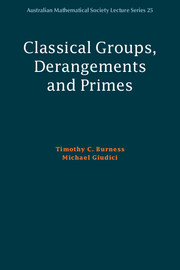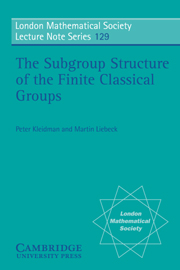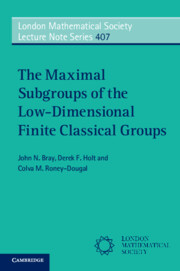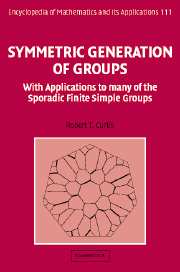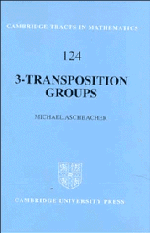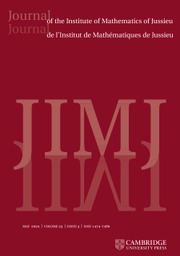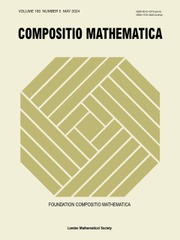Classical Groups, Derangements and Primes
A classical theorem of Jordan states that every finite transitive permutation group contains a derangement. This existence result has interesting and unexpected applications in many areas of mathematics, including graph theory, number theory and topology. Various generalisations have been studied in more recent years, with a particular focus on the existence of derangements with special properties. Written for academic researchers and postgraduate students working in related areas of algebra, this introduction to the finite classical groups features a comprehensive account of the conjugacy and geometry of elements of prime order. The development is tailored towards the study of derangements in finite primitive classical groups; the basic problem is to determine when such a group G contains a derangement of prime order r, for each prime divisor r of the degree of G. This involves a detailed analysis of the conjugacy classes and subgroup structure of the finite classical groups.
- Provides an introduction to the basic properties and geometry of classical groups accessible to graduate students and researchers working in related areas
- Gives the first unified account of conjugacy and geometry of elements in classical groups bringing together results previously scattered throughout the literature
- Material on the study of derangements will be of particular interest to researchers working in the field of permutation groups
Reviews & endorsements
'This book should be an indispensable reference for anybody doing research, or wanting to do research, in this area. Even for nonspecialists, however, chapters 2 and 3 should be a useful source of information on classical groups.' Mark Hunacek, The Mathematical Gazette
Product details
January 2016Paperback
9781107629448
366 pages
228 × 150 × 22 mm
0.29kg
3 b/w illus. 60 tables
Available
Table of Contents
- Preface
- Notational conventions
- 1. Introduction
- 2. Finite classical groups
- 3. Conjugacy classes
- 4. Subspace actions
- 5. Non-subspace actions
- 6. Low-dimensional classical groups
- Appendix A. Number-theoretic miscellanea
- Appendix B. Tables
- References
- Index.

